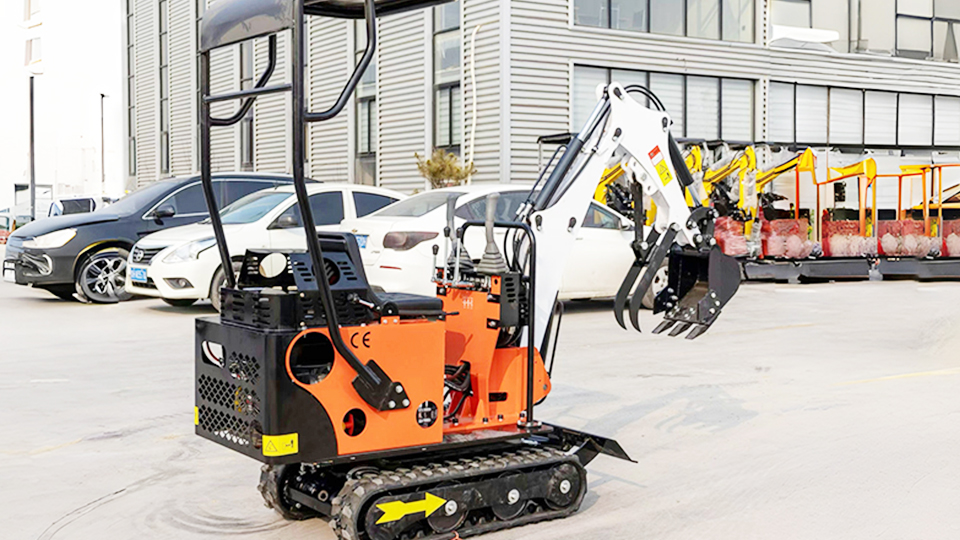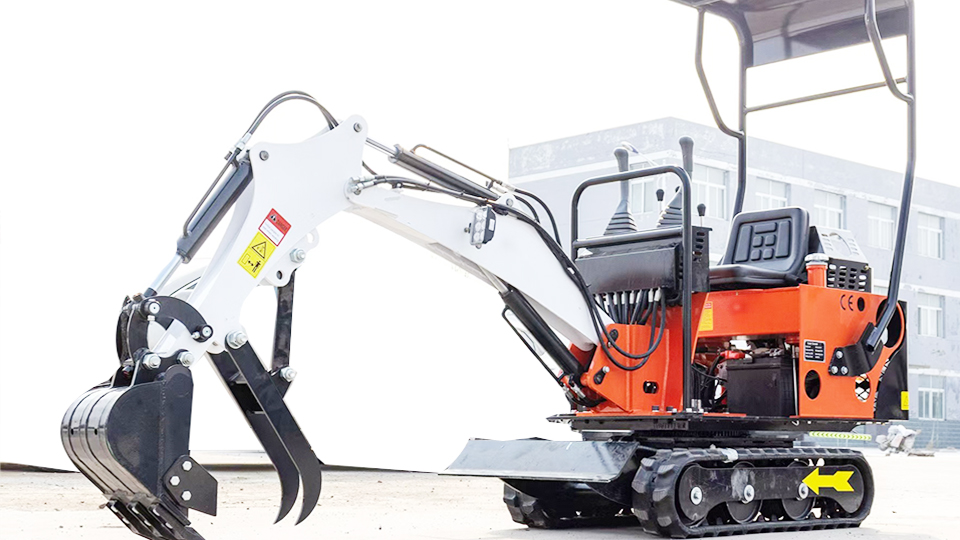A Technical Showdown: Caterpillar vs. Komatsu Excavators
The excavator market is dominated by a few key players, but the rivalry between Caterpillar and Komatsu stands as a testament to a century of innovation. Both brands have built their reputations on a foundation of reliability, power, and cutting-edge technology. While they both produce heavy machinery, a closer technical examination reveals distinct philosophies in design, engineering, and operational priorities. This article will provide a detailed technical comparison, dissecting their performance metrics, technological features, and total cost of ownership to help inform a purchasing decision.
1. Core Mechanical and Hydraulic Systems: A Tale of Two Philosophies
At the heart of every excavator is its engine and hydraulic system. This is where the core differences between Caterpillar and Komatsu engineering become most apparent.
Engine Technology:
Caterpillar: Caterpillar’s excavators are renowned for their powerful, robust engines. Their legacy C-Series and modern ACERT (Advanced Combustion Emission Reduction Technology) engines are designed for high-horsepower output and fast response. This focus on power translates directly into superior breakout force and faster cycle times, making Cat excavators well-suited for heavy-duty applications like deep excavation and rock breaking. The engineering ethos is centered on raw power and durability, often with a slightly higher fuel consumption rate compared to Komatsu.
Komatsu: Komatsu, on the other hand, is famous for its emphasis on fuel efficiency. The company's ecot3 engine technology, which incorporates a high-pressure common rail fuel injection system, and later iterations are meticulously engineered to optimize combustion and minimize fuel usage. Komatsu engines are designed to deliver high torque at lower RPMs, providing a smooth, powerful, and more economical operation. This makes Komatsu a top choice for projects where long hours and operating costs are a primary concern. The focus is on a balance of power and efficiency, prioritizing long-term savings.

Hydraulic Systems:
Caterpillar: Cat excavators are known for their fast, responsive hydraulics. Their systems are designed for high flow and pressure, contributing to their impressive digging and lifting capacities. While this provides excellent performance, some operators may find the controls to be slightly more aggressive or "jumpy" than a Komatsu. Cat's hydraulic systems are complex and robust, with a focus on delivering maximum power on demand.
Komatsu: Komatsu hydraulic systems are often described as being smoother and more precise. The company's hydraulic designs are engineered for a delicate balance of power and control, making them ideal for fine grading, finishing work, and operating in tight spaces. The controls are intuitive, and the hydraulic flow is carefully managed to ensure the machine responds predictably to operator inputs. This provides a more refined feel, which is a key selling point for operators who value precision.
2. Performance Metrics and Operational Output
Comparing performance requires looking beyond horsepower and digging depth. A true technical comparison evaluates how these machines perform in real-world applications.
Digging Force and Cycle Times:
Caterpillar: Due to its focus on raw power, a Caterpillar excavator, when compared to a similar-sized Komatsu model, often boasts a slight edge in breakout force. This makes it a formidable machine for tough digging conditions. Furthermore, Cat's hydraulic systems often result in faster cycle times—the time it takes to dig, swing, and dump—which can lead to higher productivity over a full shift.
Komatsu: While its breakout force may be marginally lower, Komatsu excavators compensate with exceptional stability and a focus on operational efficiency. The smooth hydraulics allow for consistent, repetitive movements with less operator fatigue. The real-world productivity of a Komatsu is often close to that of a Cat, with the added benefit of lower fuel consumption over time.
Fuel Efficiency:
Komatsu: This is arguably Komatsu's greatest technical strength. The company’s engineering, from the engine to the hydraulic system, is geared toward conserving fuel. Features like auto-idle shutdown and an eco-mode are standard and highly effective. In many side-by-side comparisons, a Komatsu excavator will consistently burn less fuel than a comparable Cat model, resulting in significant cost savings over the machine’s lifespan.
Caterpillar: While historically less fuel-efficient than Komatsu, Caterpillar has made massive strides with its newer generations of excavators. Features like engine idle shutdown and more advanced hydraulic systems have closed the gap. However, Cat's philosophy still leans toward power, which can translate to slightly higher fuel consumption when the machine is operating at its peak.
3. Onboard Technology and Operator Interface
In the modern era, an excavator is as much a technological tool as a mechanical one. Both brands integrate advanced systems to enhance productivity, safety, and fleet management.
Caterpillar Technology:
Cat Grade with Assist: This is a revolutionary semi-autonomous system that is now standard on many Cat excavators. It automates boom and bucket movements, allowing the operator to achieve a target grade with single-lever digging. This technology dramatically increases precision and productivity, reduces the need for grade checkers, and allows less experienced operators to perform high-precision work with confidence.
Cat Connect: This telematics system provides a wealth of data on machine location, utilization, idle time, and fuel consumption. It is a powerful tool for fleet managers to optimize operations and schedule maintenance proactively.
Komatsu Technology:
KOMTRAX: Komatsu’s telematics system is one of the most advanced in the industry. It provides real-time data on machine performance, fuel levels, and operational alerts. This system is instrumental in Komatsu’s focus on long-term ownership costs, enabling predictive maintenance and efficient fleet management. KOMTRAX often comes as a standard, no-cost feature for a number of years, which adds significant value.
Komatsu Intelligent Machine Control (iMC): Komatsu’s iMC excavators feature a fully integrated 3D GNSS system from the factory. This allows for semi-automatic digging to a pre-defined 3D model, eliminating the need for external grade checkers or stakes. The iMC system provides a level of automation that is deeply integrated into the machine's core controls, making it a powerful solution for complex grading and trenching jobs.
4. Serviceability and Total Cost of Ownership (TCO)
Beyond the initial purchase price, TCO is the ultimate metric for a long-term investment. This includes maintenance, parts, resale value, and dealer support.
Maintenance and Serviceability:
Komatsu: Komatsu has a reputation for designing machines that are relatively straightforward to service. Logical layouts, extended service intervals for key components, and easily accessible filters are a hallmark of their engineering. This can translate to lower maintenance costs and reduced downtime.
Caterpillar: Cat machines are known for their robust design, which can make some components more challenging to access. However, their parts and service network is arguably the largest and most widespread in the world. This means that a Cat owner, no matter where they are, can almost always find a dealer and get parts, which is a major advantage for global or remote operations.
Resale Value and Parts Availability:
Caterpillar: Caterpillar has a well-earned reputation for strong resale value. The brand recognition, coupled with a vast and reliable global dealer network, means that a used Cat machine often commands a higher price on the secondary market. Parts for older models are also widely available, supporting the longevity of the equipment.

Komatsu: While its resale value may not always match Caterpillar's, Komatsu machines are known for their exceptional durability and long service life, which can make them a wise investment for operators who plan to run the machine for many years. Komatsu’s dealer network is strong and focused on providing comprehensive support, especially in key regions.
Conclusion: Choosing the Right Excavator for the Job
In the technical comparison between Caterpillar and Komatsu, there is no single "winner." Both brands produce world-class excavators, but they do so with different priorities.
Choose Caterpillar if: Your projects demand raw power, fast cycle times, and a global support network. If you are doing heavy-duty work in harsh conditions, value a higher resale value, or require a machine with semi-autonomous grading technology, a Cat excavator is a highly compelling choice.
Choose Komatsu if: Your business is heavily focused on operational efficiency, fuel savings, and long-term cost of ownership. If you require a machine with a smoother, more precise hydraulic feel for fine-grading, or if you value the deep integration of telematics and 3D machine control, Komatsu offers an exceptional solution.
Ultimately, the best excavator is the one that aligns most closely with the technical and financial demands of your specific application. A thorough evaluation of these factors will ensure a smart and profitable investment.
Post time:Sep-25-2020
